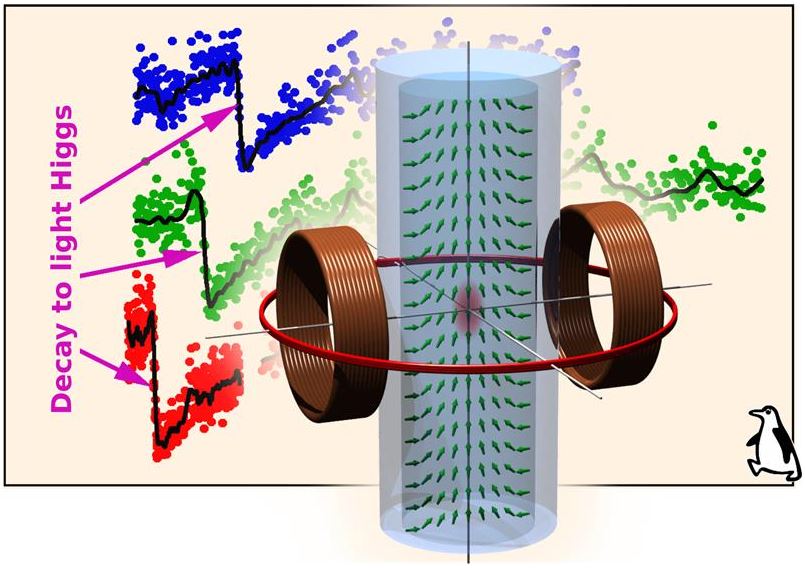New CERN experiments at 0.75 TeV suggested evidence of a second Higgs in that region and some scrambled to embrace it. Dr. Tommaso Dorigo of Science 2.0 dismissed it as a spurious 750 GeV signal observed by ATLAS and CMS in their mass spectra of photon pairs, no different than other spurious signals that ATLAS and CMS have seen in the past.

Helium-3 experimental cell and extract of data showing creation of light Higgs mode (analog of 125 GeV Higgs boson). Illustration: Dr. Vladislav Zavyalov, Low Temperature Laboratory, Aalto University.
The researchers in Finland believe otherwise. “Our recent ultra-low temperature experiments on superfluid helium (3He) suggest an explanation why the Higgs boson observed at CERN appears to be too light. By using the superfluid helium analogy, we have predicted that there should be other Higgs bosons, which are much heavier (about 1 TeV) than previously observed,” says Professor (emeritus) Grigory E. Volovik.
Of course, life is easier for theoretical physics: invent, then say it is up to experimental physics to prove things right.
S. Autti, V.B. Eltsov, P. Heikkinen, G.E. Volovik and V.V. Zavjalov; Light Higgs channel of the resonant decay of magnon condensate in superfluid 3He-B; Nature Communications; 8 January 2016; http://dx.doi.org/10.1038/NCOMMS10294






Comments